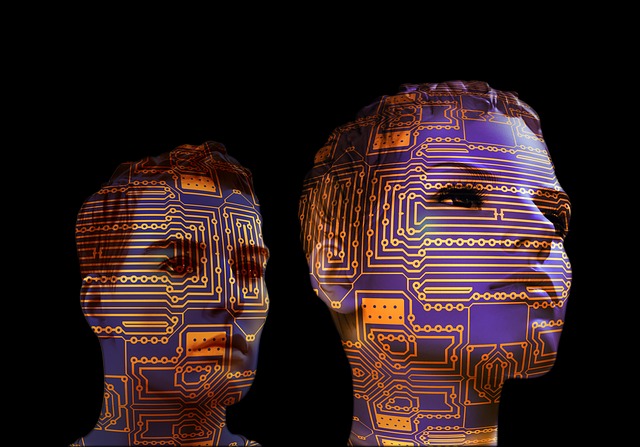With e-commerce driving the shopping trend, it’s no secret the retail sector is facing major upheaval. Over the next decade emerging technology is set to disrupt this industry even further, with experts noting the industry of the future will bear little resemblance to the retail experience of years gone by.
No longer content to walk into a store and make a purchase on the spot, the consumer of the tomorrow will continue to seek more information, more access and a more personalized experience of products and brands than ever before.
And more often than not they’ll be receiving this experience courtesy of the online realm via better customer service, easier product selection and better delivery of purchases.
Here are the major opportunities set to propel e-commerce in the future and how they’re already beginning to shape the retail sphere.
Artificial Intelligence
Essentially computer algorithms used to enhance the shopping experience, artificial intelligence allows retailers to assemble vast amounts of data to provide a more relevant experience to the online shopper.
The key to AI is that it learns and grows over time, adjusting its results based on information from the shopper along with endless other sources like the current weather, social media, location, buying trends and general consumer behavior.
Or as IBM’s Michelle Peluso told Forbes: “It works through a progression of understanding, reasoning, learning, and then adapting insight.”
Peluso continued AI is already being applied with great success by retailers to tailor shopping directly to a consumer’s needs.
Strategies include AI powered gift selection, and product selection, which are both based on consumer input and qualifying questions but also extend to external data and trends to offer tailored suggestions to the shopper.
Meanwhile, behind the scenes AI is offering retailers a more intricate understanding of consumers and predicting future shopper behavior. It can assist with stock management by monitoring the weather, trends and historical behavior to predict what a retailer needs to have on hand and when.
Chatbots
Further utilising this artificial intelligence are chatbots. These computer programs can hold a conversation between the user and consumer and are already available on platforms like Facebook Messenger, What’sApp, retail websites and apps.
As a virtual sales assistant, they offer the benefit of immediate response in real time, and their uses range from handling easy inquiries like “what time does your store open today?” to more specific frontline services such as reviews, advice, or even product delivery timeframes.
Insider trends explains they can be further used to process orders, share brand or product updates, provide in-store assistance and navigation, offer promotions based on location, and support brand storytelling.
“Chatbots can gather a huge amount of data about the user, which can be used to offer a more personalized service. They can read messages and look at past order information, learn about customer preferences and provide a quick one-to-one response any time of the day or night when staff may not be available.
“They can also help to remove some of the friction related to the shopping process – recommendations means less searching and in-app purchasing means less steps to completion”.
The Mission notes 33,000 bots were launched in 2016, but this is only the beginning of the trend.
“In the close future, chatbots will understand the emotional state of clients to better serve them. Nowadays, they cannot identify your mood and openness for jokes or further conversation. Soon, the conversational apps will be gaining by itself new points and provide more sympathetic and relevant response.”
Virtual Reality and Augmented Reality
While chatbots and artificial intelligence are about assisting the customer, virtual reality offers an entirely new product experience, with inc.com noting it has “the potential to disrupt the entire retail industry”.
“From the moment you slip on a VR headset you are immersed in the audio, video and experience of that virtual world. Retailers can shape this experience to provide an enjoyable and enticing moment for their customers,” they explain.
This has a vast variety of potential applications for retailers. Imagine being able to offer consumers the experience of seeing how a couch would look in their lounge room, or how a set of skis would make them feel on virtual ski fields.
Experts note the experience can be applied in store courtesy of a tablet kiosk and VR glasses, or even in the comfort of the home via entire virtual stores where consumers can peruse the wares from their couch.
“VR and AR have the potential to completely revolutionize the retail sector…,” DigitalBridge CEO David Levine told VR Tech News. “Bridging the imagination gap is vital for businesses, particularly as more customers move online. Retailers should embrace this technology as more consumers will come to expect it.”
Meanwhile Dr Johnny Hon, director of Infinite360 continued that by incorporating analytics and machine learning, brands could suggest purchases directly to the individual viewer.
“Virtual shopping will become an extension of online shopping and there could well be an extension of this into other aspects of life, such as entertainment.
“Imagine sitting at home watching a TV series or movie and seeing something you like – a glamorous dress, a pair of shoes, a watch – and by clicking on the item, just like that, it will be delivered to you,” he said.
Drones
But it’s not just about experiencing the product virtually or learning more about it via chatbots and AI, the consumer of tomorrow will want their product now. For bricks and mortar retailers this has prompted the buy now, pickup later push which saw a major boost in sales throughout the holiday season of 2016.
According to Astound Commerce data outlined by Forbes, 60 per cent of consumers have completed a “buy online” to “pickup in-store” purchase via mobile.
And retailers further honing this physical access to products in less time will be best placed to embrace the e-commerce trend.
E-Commerce Guide explains the immediate gratification may soon include delivery by drone in as little 30 or 60 minutes.
“Drones will be sent out from distribution centers and travel directly to the delivery addresses provided, at significantly lower cost and logistical hassle than at present,” they state. “Amazon, among others, are already seriously close to making this a reality across the entirety of their business, and it seems that others will be clamoring to follow suit as quickly as possible.”
The final word
Statistics indicate the majority of retail growth is being driven by e-commerce, with online shopping outstripping bricks and mortar growth by up to 10% according to Business Insider.
For retailers, better service, increased personalization and immersion in a brand will be the keys to riding the future retail wave in a sea of increased competition.
Find a Home-Based Business to Start-Up >>> Hundreds of Business Listings.




















































